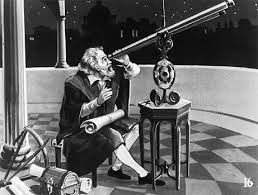Scientific Revolutions: The Copernican Revolution
Planetary astronomy from the Greeks to the age of Newton. This course is a blend of history and science, and it explores the role of planetary astronomy in the development of Western thought. Readings from Aristotle, Ptolemy, Copernicus, Galileo, Kepler, and Newton. Astronomical observations and laboratory work. (Satisfies the laboratory/field requirement for natural sciences.) (Meets the Critical Perspectives: Scientific Investigation of the Natural World requirement.) (Meets the Critical Perspectives: Quantitative Reasoning requirement.) 1 unit - Hilt. Meets the Critical Perspectives: Scientific Investigation of the Natural World requirement. Meets the Critical Perspectives: Quantitative Reasoning requirement. (Not offered 2022-23).
Degree requirement — Critical Perspectives: I, Critical Perspectives: Q
1 unit
Previously Featured Offering

We’ll spend this first block studying the beginning of modern science, one of the defining characteristics of Western society. We’ll begin by looking at what came before—Aristotelian physics and its development through the Middle Ages. Then we’ll look at challenges to Aristotelian physics, focusing on the pivotal figure of Galileo. Finally, we’ll see the new physics in all of its glory, as developed by Isaac Newton. At every stage we’ll look at theoretical and experimental developments, study the important figures involved, and look at the cultural impact of these great discoveries. Our primary subject matter will be motion—that of terrestrial objects and that of the heavenly bodies. We will study the development of science in Western Europe, but we’ll notice how the sciences of other cultures impacted and were impacted by these developments in Europe.


